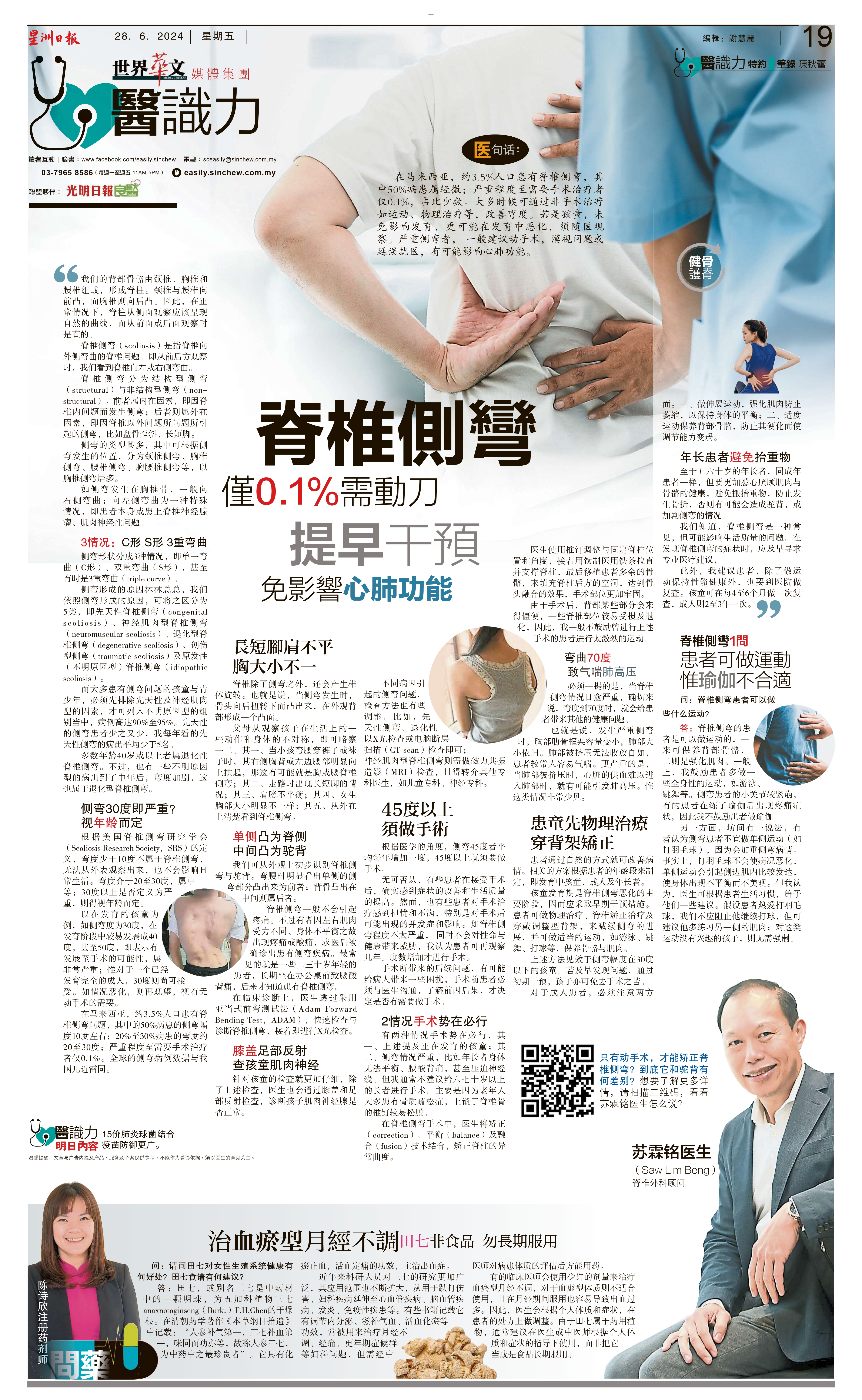Understanding Scoliosis and Its Treatment Options
28 June 2024

In Malaysia, about 3.5% of the population suffers from scoliosis, of which 50% are mild and only 0.1% are severe and require surgery, which is a minority. Most of the time, the curvature can be improved through non-surgical treatments such as exercise and physiotherapy. In children, the scoliosis may affect development and may worsen during development, so it is important to follow up with a doctor to monitor the condition. For severe scoliosis, surgery is usually recommended. Ignoring the problem or delaying treatment may affect cardiopulmonary function.
 According to Consultant Spine Surgery, Dr Saw Lim Beng, scoliosis is a spinal problem in which the spine curves outward. “That is, when looking from the front and back, we see the spine curving to the left or right,” he said.
According to Consultant Spine Surgery, Dr Saw Lim Beng, scoliosis is a spinal problem in which the spine curves outward. “That is, when looking from the front and back, we see the spine curving to the left or right,” he said.
“There are many types of scoliosis, which can be categorized into cervical scoliosis, thoracic scoliosis, lumbar scoliosis, thoracolumbar scoliosis, etc., with thoracic scoliosis being the most common.
“The shape of the scoliosis is categorized into 3 shape or curve, such as a single curve (C-shape), a double curve (S-shape), and even sometimes a triple curve,” he explained.
According to the Scoliosis Research Society (SRS), he said, a curvature of less than 10 degrees is not considered scoliosis, is not visible from the outside, and does not affect daily life. “A curvature between 20 and 30 degrees is considered moderate, while a curvature of 30 degrees or more is considered severe, depending on age,” he stated.
He explained, scoliosis does not usually cause pain. However, some people may experience pain or soreness due to different muscle stresses on the left and right side of the spine and imbalance in the body, and are diagnosed with scoliosis after seeking medical attention. “The most common is some young patients in their 20s and 30s, sitting at a desk for a long time, resulting in back pain, and only later realized that they have scoliosis,” he added.
From medical point of view, a scoliosis of 45 degrees increases by an average of one degree per year, and surgery is required for scoliosis of 45 degrees or more.
“We know that scoliosis is a common, but potentially life-altering problem. When symptoms of scoliosis are detected, early professional medical advice should be sought.
“In addition, I would advise patients, apart from doing exercises to keep their bones healthy, to have a review in the hospital. Children can have a review every 4 to 6 months and adults once every 2 to 3 years,” he emphasized.
Source: Sin Chew Daily
Back




